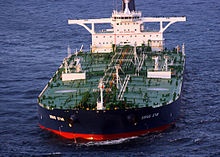Oil reverses 2 days of decline, but OPEC still worried
15 Mar 2018
Oil reversed two days of declines on Wednesday as signs of stronger fuel demand were balanced by surging US supply.
 Futures prices fell earlier after OPEC underlined the strength in US production and a government report showed a larger-than-expected crude inventory. Gasoline stockpiles sank the most since September and total inventories of crude and products, including the strategic reserve, fell by 4.53 million barrels. Total product demand was the highest since January.
Futures prices fell earlier after OPEC underlined the strength in US production and a government report showed a larger-than-expected crude inventory. Gasoline stockpiles sank the most since September and total inventories of crude and products, including the strategic reserve, fell by 4.53 million barrels. Total product demand was the highest since January.
The Organisation of Oil Producing and Exporting Countries (OPEC) on Wednesday raised its forecast for non-member oil supply this year to almost double the growth predicted four months ago as higher prices spur US shale drilling, offsetting OPEC-led output cuts and a collapse in Venezuelan production.
In a monthly report, the Organization of the Petroleum Exporting Countries said non-OPEC producers would boost supply by 1.66 million barrels per day in 2018. That was the fourth straight rise from 870,000 bpd forecast in November.
''For 2018, higher growth is expected on the back of the projected increase in US shale production following a better price environment not only for shale producers, but also for other countries such as Canada, the UK, Brazil and China,'' OPEC said of the outlook for non-OPEC supply.
This would lead to ''a higher quarterly distribution throughout the year with a record-high level projected for the fourth quarter'', OPEC said.
OPEC, Russia and several other non-OPEC producers, but not the United States, began to cut supply in January 2017 in an effort to erase a global glut of crude that had built up since 2014. They have extended the pact until the end of 2018.
The deal has helped boost oil prices, which topped $71 a barrel this year for the first time since 2014 and were near $65 on Wednesday. But it has also encouraged a flood of shale, fuelling a debate about the curbs' effectiveness.
Oil pared much of an earlier gain on Wednesday after the release of the OPEC report.
Crude has struggled since hitting a three-year high in January. A broader market slump initially drove prices lower, while surging American production and increasing inventories remain a challenge. OPEC acknowledged the scale of the shale boom, forecasting for the first time that supply growth from rivals will outstrip the increase in demand this year.
West Texas Intermediate for April rose 25 cents to settle at $60.96 a barrel on the New York Mercantile Exchange. The discount of April contracts to May widened to 6 cents as growing supply weighed on the value of oil for prompt delivery.
Brent for May settlement rose 25 cents to $64.89 a barrel on the London-based ICE Futures Europe exchange, and traded at a $3.87 premium to WTI for the same month.
Rising US production continues to stoke market fears. US output climbed by 12,000 barrels to 10.381 million barrels a day last week, the highest in weekly data going back to 1983, according to the Energy Information Administration. Production is expected to top 11 million barrels a day in late 2018.
Still, last week's massive products draw buoyed prices on Wednesday. Gasoline stocks fell 6.27 million barrels to 244.8 million, the Energy Information Administration (EIA) report showed. Distillate inventories fell by 4.36 million barrels to the lowest level since December. April gasoline rose 2 per cent to $1.9243 a gallon.
Prices also received some support from Rex Tillerson's ouster as US secretary of state. The move could have implications for US sanctions on Iran, which could impact the latter's oil industry and exports, Facts Global Energy and Royal Bank of Canada warned.
Iraq is talking with the Kurds and Turkey about restarting crude shipments from fields in the Kirkuk area of northern Iraq, Oil Minister Jabbar al-Luaibi told reporters in Basra. Iraq's oil output is currently at 4.37 million barrels a day and production capacity is 4.7 million.
Traders of crude oil cargoes face a dilemma. Is the global market just showing a typical seasonal lull, or warning of something more ominous? Wall Street analysts like Goldman Sachs Group Inc. and JPMorgan Chase & Co. remain convinced prices will strengthen again, but some key data suggest the problem could run deeper.
China's factory output and investment growth unexpectedly accelerated in the first two months of the year amid robust global demand.
Restraint shown by US producers supports Goldman Sachs Group Inc's bullish oil view, the bank said in a report. It expects strong oil demand growth and high OPEC compliance to push inventories further below the five-year average in the third quarter.